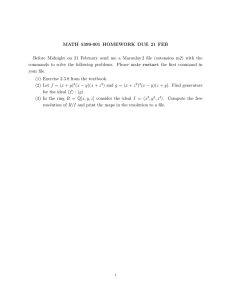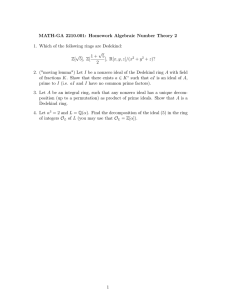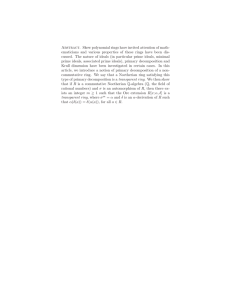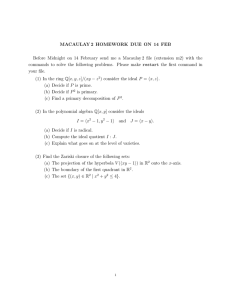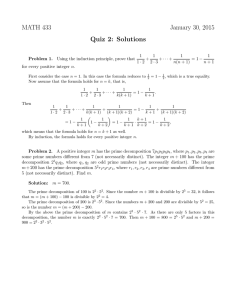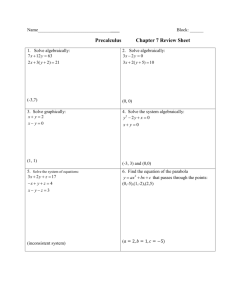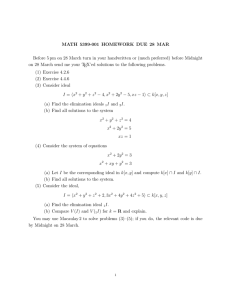MATH 5399-001 HOMEWORK DUE 7 FEB
advertisement
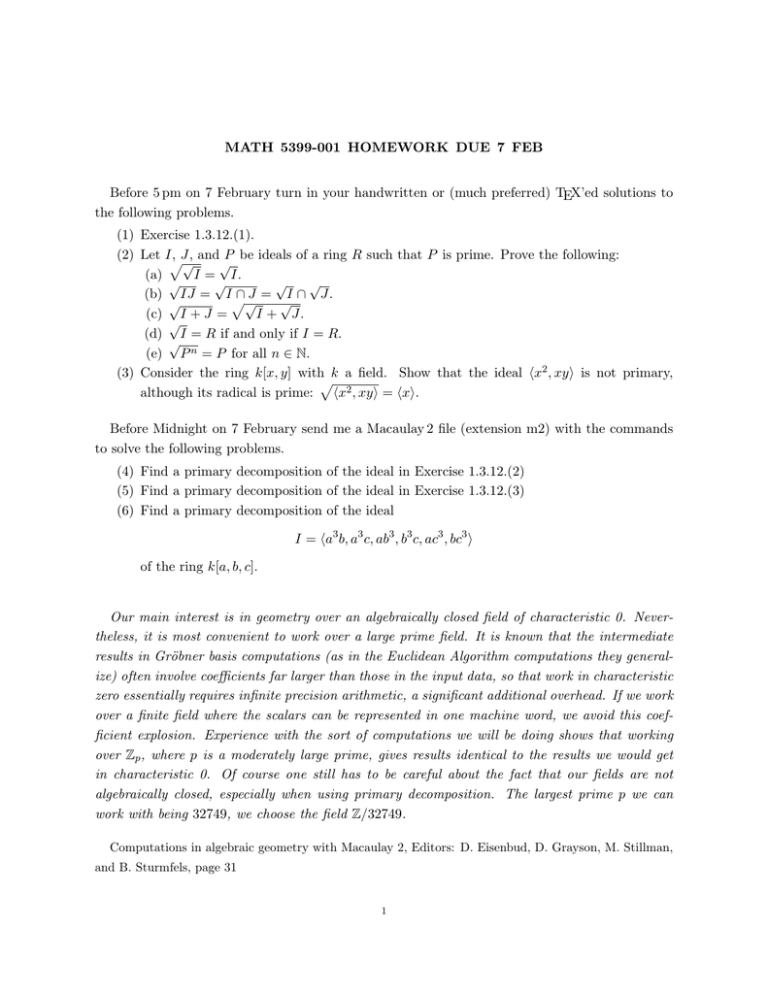
MATH 5399-001 HOMEWORK DUE 7 FEB Before 5 pm on 7 February turn in your handwritten or (much preferred) TEX’ed solutions to the following problems. (1) Exercise 1.3.12.(1). (2) Let I, and P be ideals of a ring R such that P is prime. Prove the following: pJ, √ √ I = I. (a) √ √ √ √ (b) IJ = Ip ∩ J = I ∩ J. √ √ √ I + J. (c) I + J = √ (d) I = R if and only if I = R. √ (e) P n = P for all n ∈ N. (3) Consider the ring k[x, y] with k a field. Show that the ideal hx2 , xyi is not primary, p although its radical is prime: hx2 , xyi = hxi. Before Midnight on 7 February send me a Macaulay 2 file (extension m2) with the commands to solve the following problems. (4) Find a primary decomposition of the ideal in Exercise 1.3.12.(2) (5) Find a primary decomposition of the ideal in Exercise 1.3.12.(3) (6) Find a primary decomposition of the ideal I = ha3 b, a3 c, ab3 , b3 c, ac3 , bc3 i of the ring k[a, b, c]. Our main interest is in geometry over an algebraically closed field of characteristic 0. Nevertheless, it is most convenient to work over a large prime field. It is known that the intermediate results in Gröbner basis computations (as in the Euclidean Algorithm computations they generalize) often involve coefficients far larger than those in the input data, so that work in characteristic zero essentially requires infinite precision arithmetic, a significant additional overhead. If we work over a finite field where the scalars can be represented in one machine word, we avoid this coefficient explosion. Experience with the sort of computations we will be doing shows that working over Zp , where p is a moderately large prime, gives results identical to the results we would get in characteristic 0. Of course one still has to be careful about the fact that our fields are not algebraically closed, especially when using primary decomposition. The largest prime p we can work with being 32749, we choose the field Z/32749. Computations in algebraic geometry with Macaulay 2, Editors: D. Eisenbud, D. Grayson, M. Stillman, and B. Sturmfels, page 31 1
